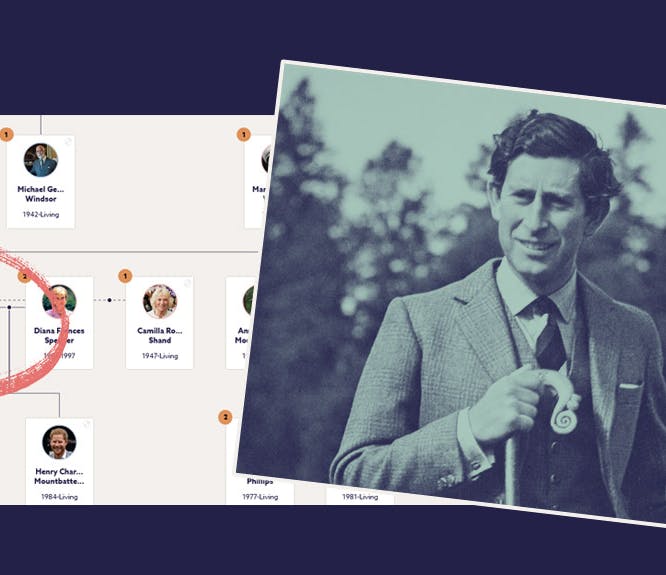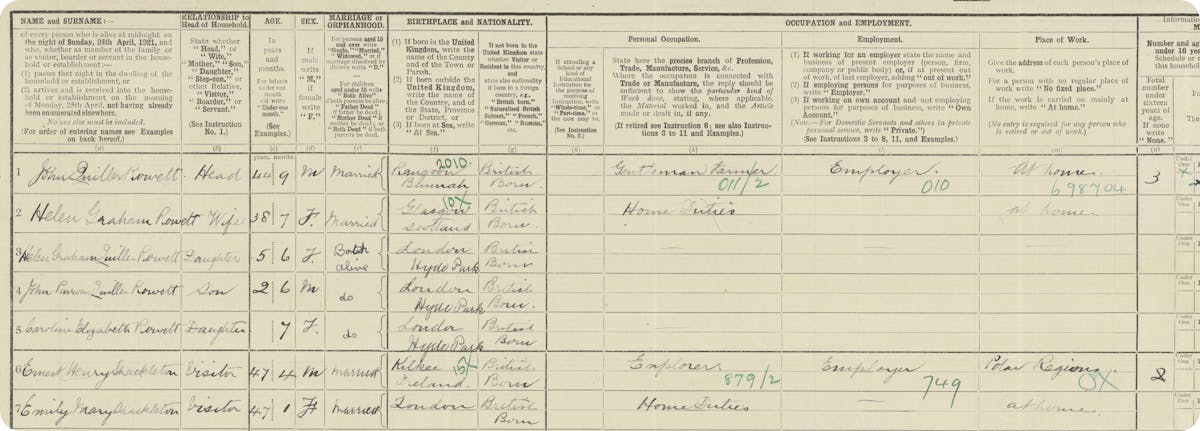Into the ice: the Antarctic expeditions of Sir Ernest Shackleton
10+ minute read
By Charlotte Ward Kelly | November 17, 2023
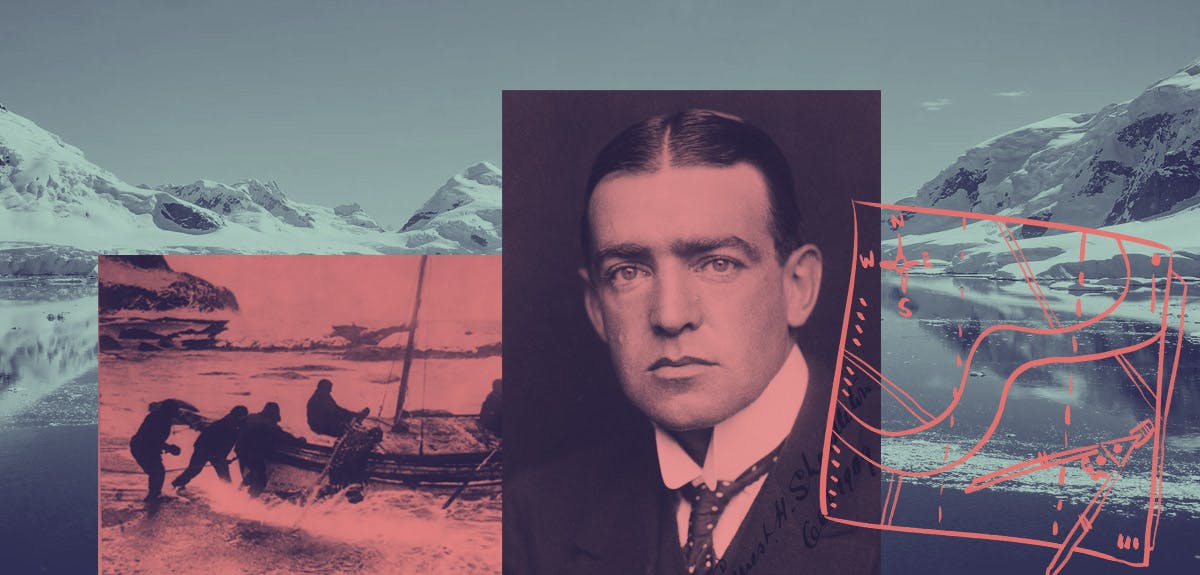
Learn more about Sir Ernest Shackleton - one of history's most memorable adventurers.
Ernest Henry Shackleton was one of the most prominent figures in the period known as the Heroic Age of Antarctic Exploration. His expeditions to Antarctica not only made him a national hero - they also led to some fascinating discoveries and cemented his position in the history books.
We delved into our billions-strong record collection, to take a look at Shackleton's life and work over a century on.
Shackleton's humble beginnings
Ernest Shackleton was born 15 February 1874 in Kilkea, County Kildare, Ireland to Henry, a farmer, and Henrietta Letitia Sophia Gavan. He was the second of ten children.
After studying medicine at Dublin’s Trinity College in 1880, Ernest’s father moved the family to London, perhaps in search of better opportunities as a newly qualified doctor. Despite leaving Ireland at a young age, Ernest always declared he was a proud Irishman.
At the age of 13, school records reveal that Shackleton attended South London's prestigious Dulwich College. He was not the most scholarly pupil but did enjoy reading and developed a passion for adventure and exploration.
When he was 16, Shackleton left school and started an ‘apprenticeship before the mast’ with the North Western Shipping Company aboard the ship Houghton Tower. Shackleton spent four years at sea, sailing all over the world and learning how to be a sailor. It was a life that suited him and one that he enjoyed.
He would rise through the ranks, becoming a third officer in 1894, a first mate in 1896, and eventually a master mariner in 1898 (meaning he could command a British ship anywhere in the world).
In 1899, Shackleton transferred to the troop ship Tintagel Castle at the outbreak of the Boer War. There he met a young lieutenant Cedric Longstaff whose father, Llewellyn W Longstaff, was financing the National Antarctic Expedition.
Shackleton used his connections to meet with Longstaff and asked to be a part of the expedition. He was accepted, appointed as the third officer on the expedition’s ship RSS Discovery, and was commissioned as a sub-lieutenant in the Royal Naval Reserve. This marked the end of Shackleton’s career in the merchant navy and his first step to becoming one of the most celebrated explorers in the Heroic Age of Antarctic Exploration.
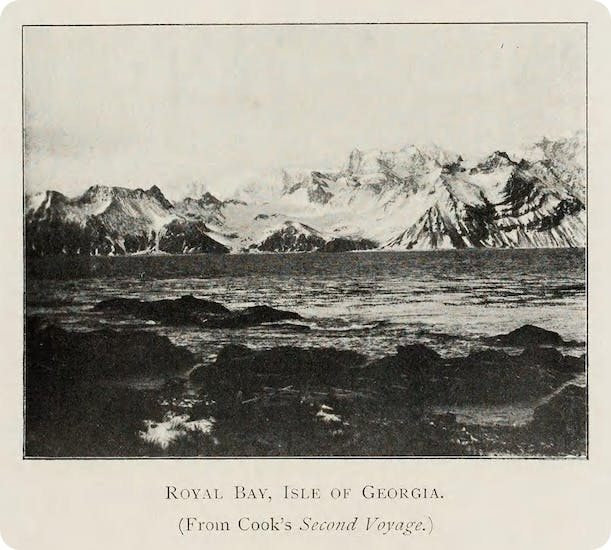
In the 1901 census, Shackleton can be found in Wadhurst, Sussex. He is listed as a visitor in the Dorman household, which includes Emily Dorman - whom Ernest would go on to marry in 1904 upon returning from his first expedition. Aged 28, Ernest gives his occupation as ‘master mariner’ for the first time, having been listed as a boy upon the Houghton Tower on the 1891 Census.
The Heroic Age of Antarctic exploration
The ‘Heroic Age’ was a period from the late 19th century until after the First World War, when 17 major expeditions involving ten countries were led into unchartered parts of Antarctica. They aimed to explore and document unchartered parts of the world, including the South Pole, and to make significant geographical and scientific discoveries.
It was dubbed the ‘Heroic Age’ as the expeditions involved incredible feats of endurance, bravery and discipline. Along with Shackleton, other important figures of this period included Captain Scott, Roald Amundsen, Lawrence Oates, Aeneas Mackintosh, and Douglas Mawson.
These expeditions were incredibly dangerous, and many men lost their lives. One of the most infamous and tragic expeditions during this age was the British Terra Nova Expedition led by Captain Robert Falcon Scott. Accompanied by Edward Adrian Wilson, Lawrence Oates, Henry Robertson Bowers and Edgar Evans, Scott and his team raced the Norwegian expedition led by Roald Amundsen to be the first to reach the South Pole.
Scott and his team arrived on 12 January 1912 only to discover Amundsen and his team had arrived 34 days prior. On the return journey, tragedy struck as they battled hunger, illness, fatigue, injuries, and freezing conditions. Edgar Evans died on 17 February 1912 after collapsing on the march back.
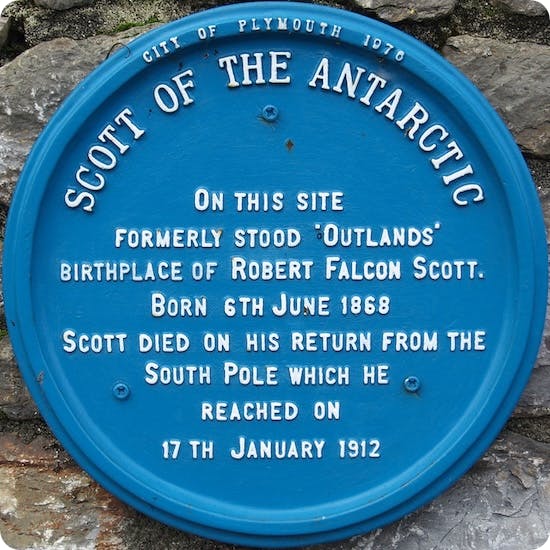
A commemorative plaque for Captain Robert Falcon Scott, on Scott Street in Plymouth. View this record.
On 16 or 17 March, Scott noted in his diary that Oates, who had been struggling for a few days, left their tent saying 'I am just going outside, and may be some time'. Scott and the others knew Oates was walking to his death. Days later, and 11 miles from their destination, Scott, Wilson, and Bowers died in their tent. Their bodies were discovered on 12 November 1912.
Shackleton once stated that the five qualities necessary for being a successful Polar explorer were as follows: 'First, optimism; second, patience; third, physical endurance; fourth, idealism; fifth, and last, courage'.
The British National Antarctic Expedition, 1901-1903
In 1895, the International Geographical Conference passed a resolution that the ‘exploration of the Antarctic Regions is the greatest piece of geographical exploration still to be undertaken’ and that expeditions to the region would make significant contributions to science. Renowned explorer Sir Clements Markham pushed forward a British expedition. He appointed Captain Scott as the expedition leader and ordered the construction of the RRS Discovery. 48 men, including Shackleton, took part in the expedition.
The expedition left London on 31 July 1901, reaching the Antarctic coasts on 8 January 1902. Scott ensured that the expedition was well supplied, with provisions to last 3 years including polar clothing, sledges, dogs, sheep, tools, books, alcohol, and tobacco. British companies such as Cadbury’s and Bird & Sons used it as opportunity for publicity, supplying the expedition with cocoa powder and custard powder. Shakleton, as the third officer, was responsible for the stores and supplies, as well as entertainment.
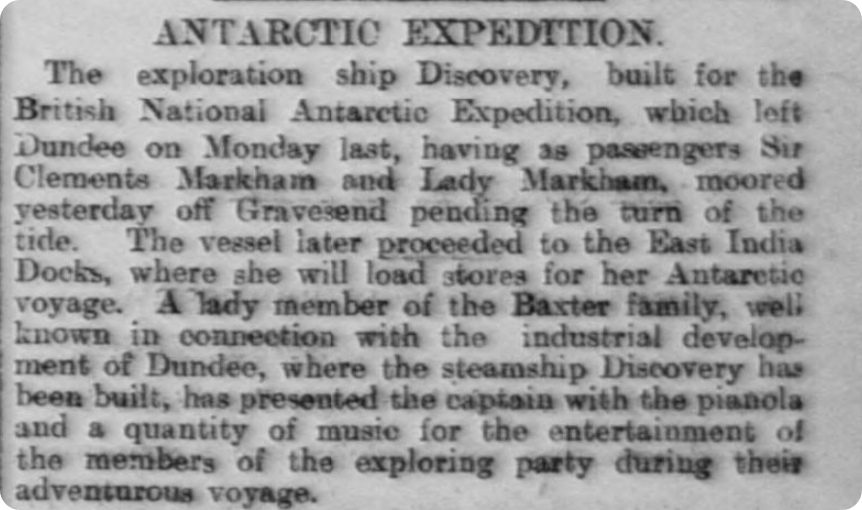
The expedition discussed in the Nottingham Evening Post, 7 June 1901.
Significant discoveries were made, including over 500 new marine animals and species, miles of coastline, geographical features including mountains and glaciers, and magnetic measurements. On 2 November 1902, Scott, Shackleton and Wilson left the ship and set off to cross the Great Ice Barrier.
They travelled further south than anyone previously, walking over 950 miles in 93 days. However, the trip took a significant toll on the men and Shackleton was incapacitated with scurvy. It was decided that they needed to get home rather than push forwards. Despite the odds, the 3 men made it back to the Discovery. Shackleton was sent home on the relief ship Morning, arriving in England ahead of the rest of the expedition who eventually returned on 10 September 1904.
Nimrod Expedition, 1907-1909
In 1907, Shackleton presented his plan for the British Antarctic Expedition to the Royal Geographical Society. The aim of the expedition was to reach the geographical and magnetic south poles. The expedition was approved and was thrown together relatively quickly. Shackleton had the Nimrod refitted and selected a crew of over 30 including Frank Wild and Ernest Joyce who had been with him on Discovery, Sir Philip Lee Brocklehurst, Edgeworth David who head the scientific team, Jameson Boyd Adams as the second-in-command, and Alfred Cheetham as the third officer.
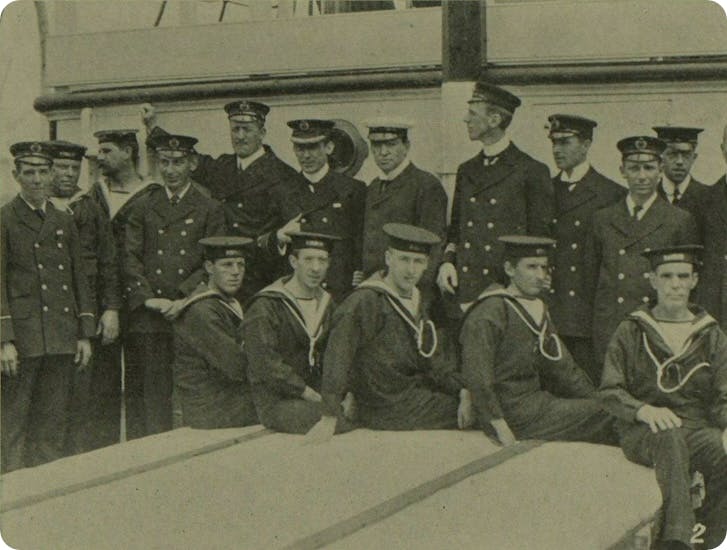
The crew of the Nimrod Expedition, featured in the Illustrated London News, 27 March 1909.
The expedition arrived in Antarctica in early 1908 and made their base at Cape Royds, Ross Island where Shackleton’s team spent the winter preparing for their expedition south. Their hut had sleeping spaces, a kitchen area, a darkroom, storage, stalls for the horses, kennels for the dogs, and a laboratory. Shackleton’s style of leadership was inclusive, he did not divide between classes or the upper and lower decks – everyone worked, ate, and lived together.
During the expedition, six of Shackleton’s men were the first to climb Mount Erebus. Shackleton, Marshall, Wild, and Adams trekked the farthest south any human had at that point and discovered the Beardmore Glacier – one of the largest glaciers in the world and the gateway to the South Pole. Though Shackleton had ambitions of reaching the South Pole, the starvation, inhospitable terrain, freezing temperatures, and exhaustion the men faced forced them to return to camp.
The Nimrod expedition cemented Shackleton as a national hero and one of the greatest Antarctic explorers. Upon his return in 1909, Shackleton was knighted by the King and undertook a series of lectures around the UK, Europe, and America.
Imperial Trans-Antarctic Expedition, 1914-1917
The aim of Shackleton’s next adventure, the Imperial-Antarctic Expedition (also known as the Endurance Expedition) was to cross the Antarctic continent. Shackleton split the expedition into two parties – the Weddell Sea party which would make the crossing and the Ross Sea Party, who would support the crossing and ensure that there were stores set up for the others once they reached the other side.
56 men were recruited, including Shackleton, Wild, Frank Hurley who took remarkable photographs of the expedition, Tom Crean, Alfred Cheetham, Hubert Hudson, Frank Worsley, and Leonard Hussey.
The expedition left Britain on 8 August 1914 and made it to the Weddell Sea in early 1915. On 19 January 1915, Endurance became trapped in the ice of the Weddell Sea. Knowing that she would be trapped for a few months, Shackleton ordered the crew to set up a winter base using the ice and the ship.
Though Shackleton was hopeful that Endurance would be freed from the ice, by October 1915 the crew started to realise that her situation was becoming hopeless. Shackleton ordered them to abandon ship and the crew watched as she was slowly crushed by the ice. On 21 November 1915, Endurance sank beneath the surface. She would not be seen again for another 107 years until the Endurance22 expedition successfully found her final resting place.
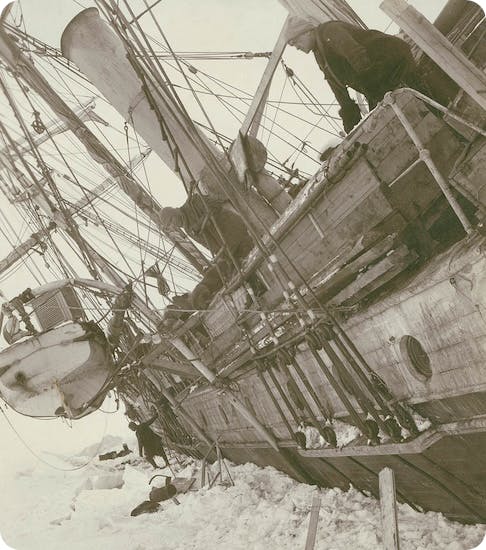
Ernest Shackleton and Frank Worsley with the Endurance, trapped in ice, 1915. Photograph taken by Frank Hurley.
With the ice beginning to crack, the crew journeyed to find a new location to set up camp. After 497 days at sea, they landed on Elephant Island on 15 April 1916. Two boats were used to make a shelter for the men which would be their home for the next 4 months. The men battled ill-health, starvation (food was scarce so they hunted local wildlife including penguins and seals), frostbite, and the uncertainty that they would survive.
Shackleton, knowing their situation was desperate, decided to search for help. He took 5 members of his crew with him – Worsley, Crean, McNish, Vincent, and McCarthy – returning 4 months later rescuing the remainder of his crew. Once again Shackleton’s leadership, along with the bravery and resourcefulness of his men, ensured that all 28 members of his crew survived.
Shackleton and his men returned home as heroes, though in the midst of the First World War.
The Shackleton-Rowett Expedition
An intriguing find in the 1921 Census places Shackleton and his wife Emily at the home of his school friend John Quiller Rowett. This meeting comes at an interesting time in the planning of Shackleton’s next expedition.
In 1920, Shackleton presented a plan to the Royal Geographical Society for an expedition to the Arctic, to explore the Beaufort Sea and reach the northern pole of inaccessibility. The plans were approved, and Shackleton set about acquiring the funding for the expedition. John Quiller Rowett agreed to put in some funds for the expedition. However, in May 1921, the new Canadian Prime Minister Arthur Meighan withdrew support for the expedition and Shackleton was forced to change his plans.
With the 1921 Census being taken on 19 June, the fact that Shackleton is staying with Rowett, and having had his expedition pulled the month prior, makes it likely that the two men were together to discuss new plans for another Antarctic expedition. A week after this meeting, Shackleton announced that he would be undertaking another expedition south for further coastal mapping and research, and that, thanks to the generous donation of his friend, it would be called the Shackleton-Rowett Expedition.
The expedition left England aboard the expedition vessel Quest on 24 September 1921. A crew of 24 joined Shackleton, many of whom had been with him on Endurance, including Frank Wild, Leonard Hussey, and Thomas McLeod.
When the expedition arrived in Rio de Janeiro, Shackleton suffered a suspected heart attack. He refused medical attention and pushed the expedition south, arriving at South Georgia on 4 January 1922.
In the early hours of 5 January, Shackleton called Alexander Macklin, the physician, to his cabin complaining about back pain. Macklin recommended taking things easy to which Shackleton responded, 'You are always wanting me to give up things, what is it I ought to give up?'.
Shackleton died a few minutes later, at 2:50 am.
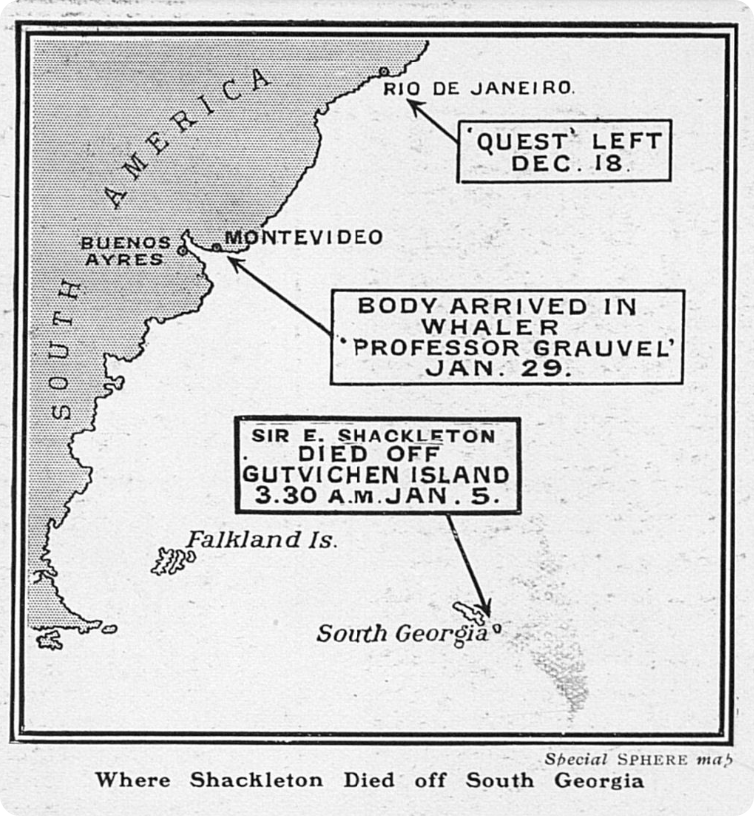
Shackleton's death reported in The Sphere, 4 February 1922.
A post-mortem concluded that Shackleton died from an atheroma of the coronary arteries - he had previously suffered from heart issues. Leonard Hussey offered to accompany Shackleton’s body back home but, on the return journey, a message from Shackleton’s wife Emily was received saying that Shackleton should be buried on South Georgia island.
Hussey returned to South Georgia and Shackleton was buried in the Grytviken cemetery. Wild wrote - ‘I have not the least doubt that had Sir Ernest been able to decide upon his last resting place, it is just here that he would have chosen to lie'.
In 2011, the ashes of Frank Wild were interred next to Shackleton’s, forever his right-hand man.

Shackleton's memorial ceremony, as described in the London Daily Chronicle, 3 March 1922.
Shackleton died severely in debt but left behind an incredible legacy. As our newspapers reveal, a memorial held at St Paul’s Cathedral was attended by the King and members of the royal family. Ernest Shackleton was a national hero, having made significant geographical and scientific discoveries, embodying the strength of leadership, and undertaking incredible feats of human endurance.
For maritime stories, tales of military heroism and so much more, visit the Findmypast History Hub. Together, we can understand the world that our ancestors lived in, in more rich detail than ever.
Related articles recommended for you
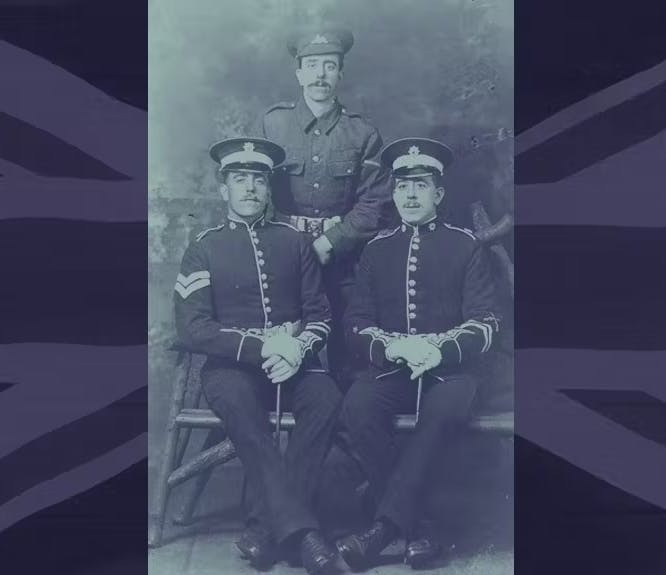
Five must-read books to discover more about the British Army during the First World War
History Hub
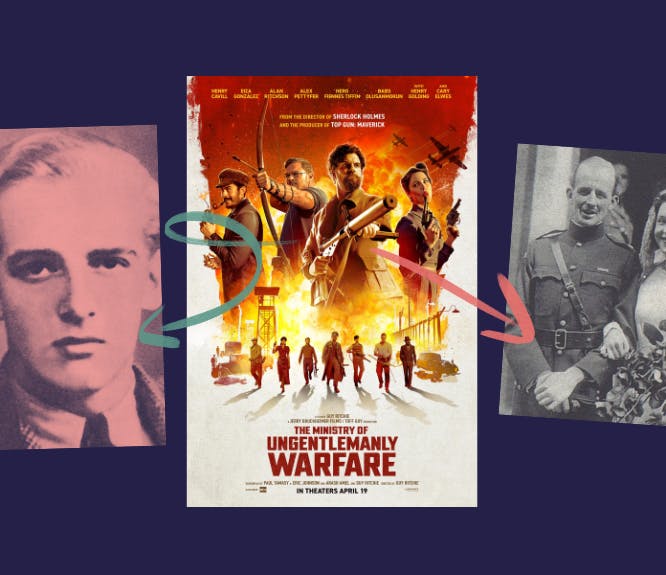
The incredible true story behind The Ministry of Ungentlemanly Warfare
History Hub
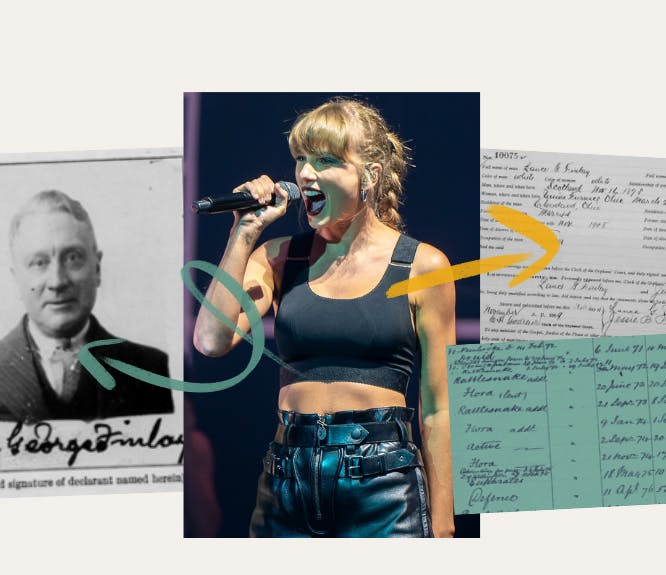
Taylor Swift’s family tree shines with love, heartbreak and the triumph of the human spirit
Discoveries
